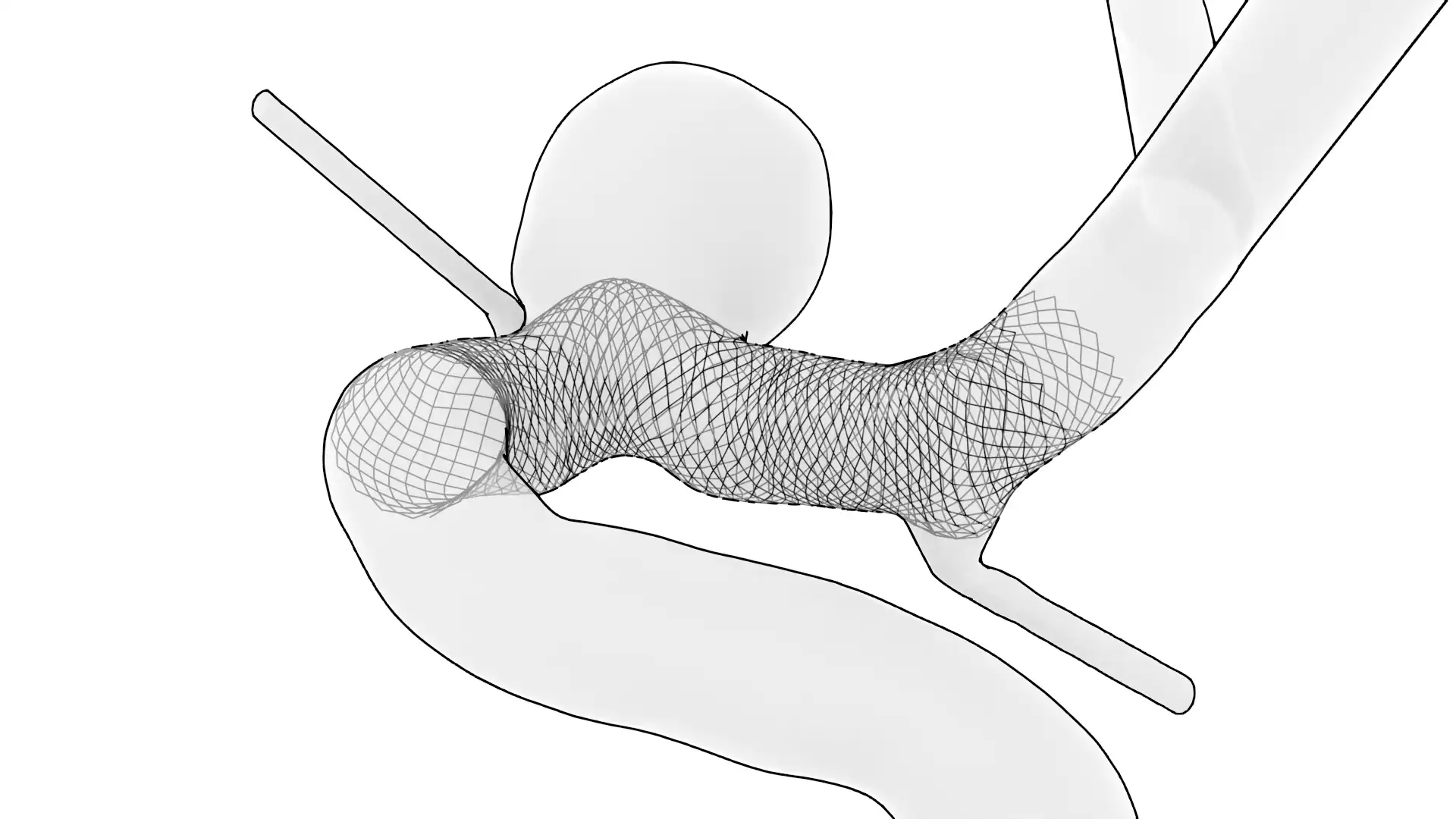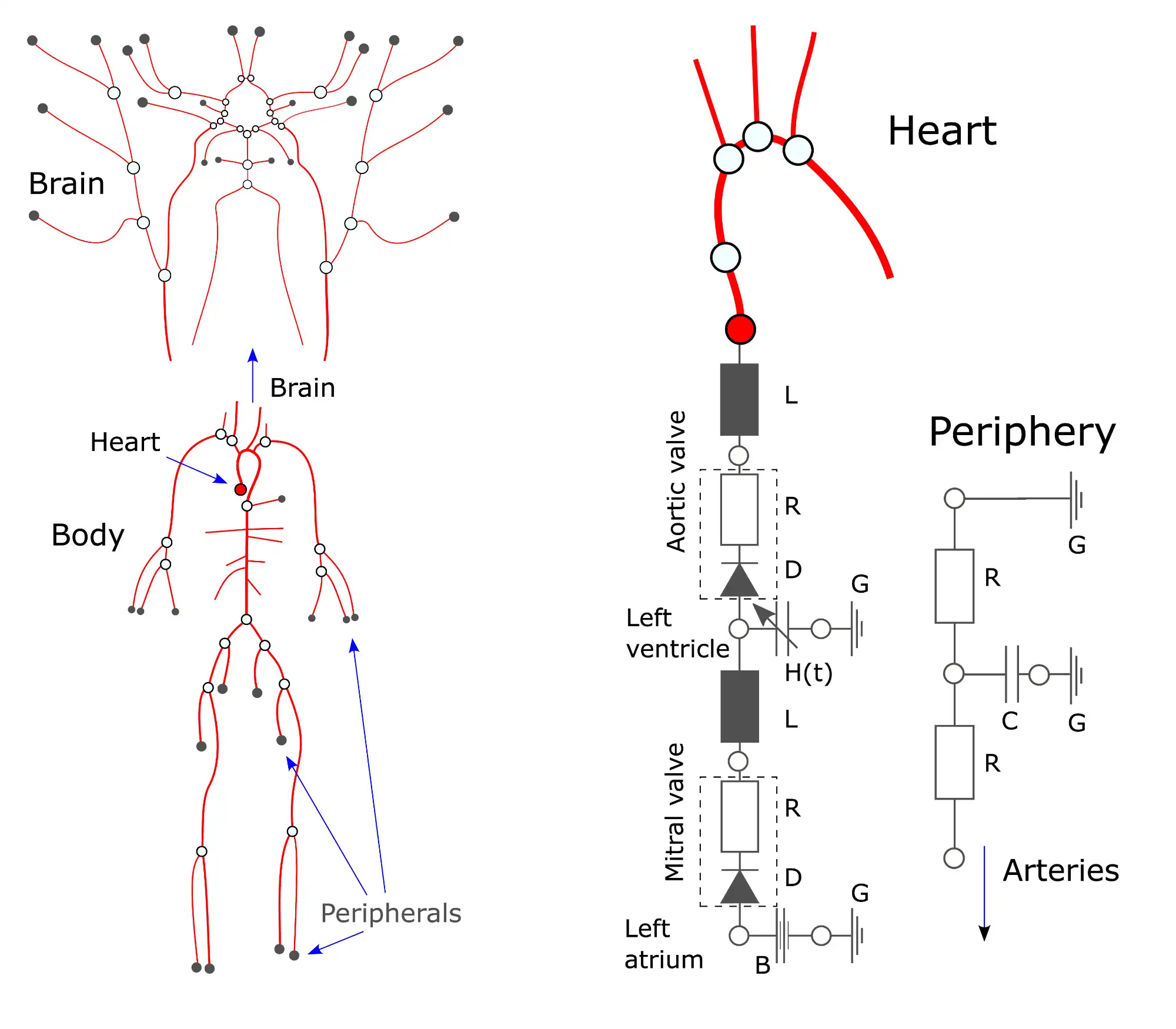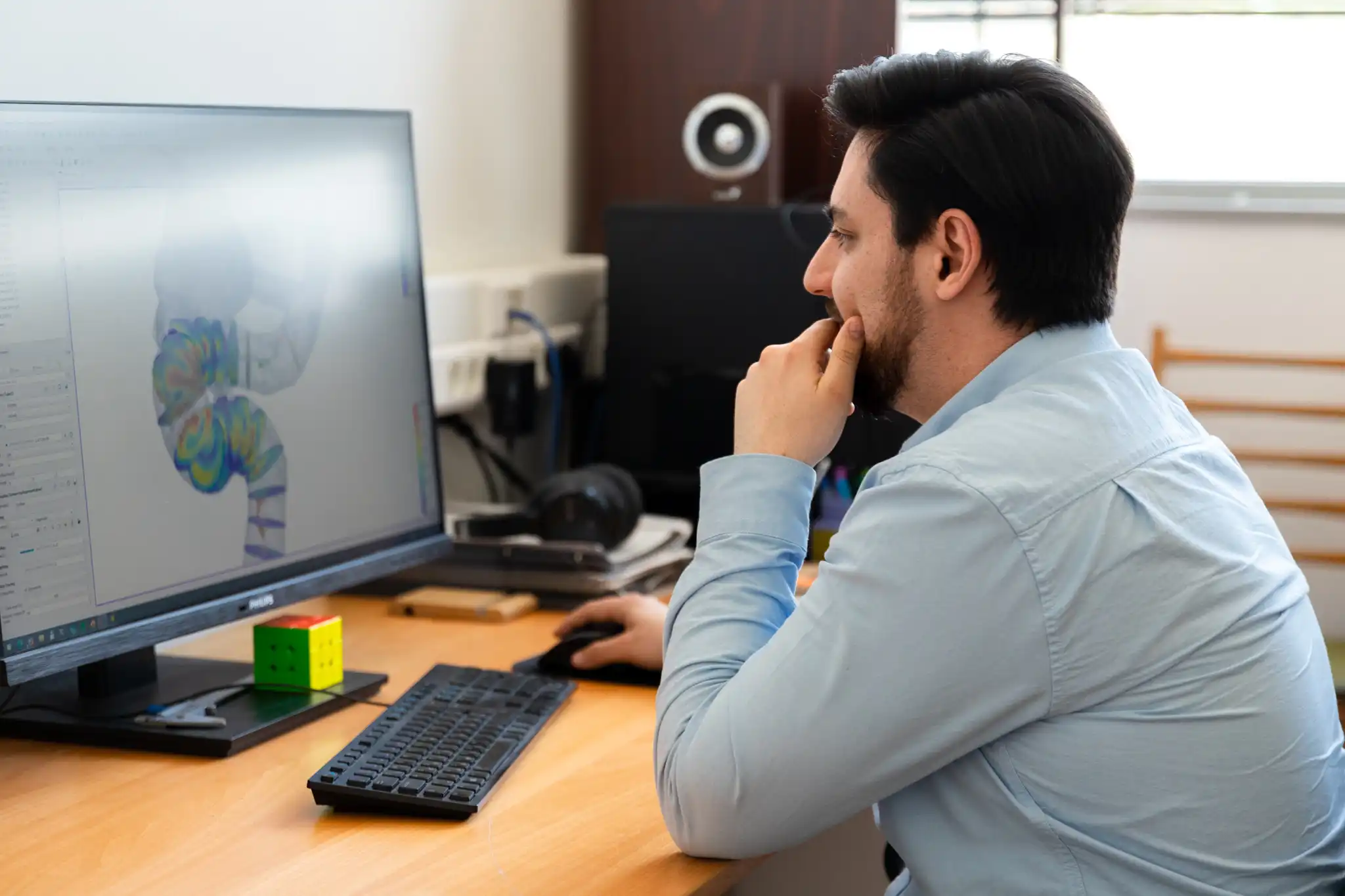

The research on blood flow in the Department can be traced back to its long tradition of research on drinking water networks. The experience gained through numerous measurements and modeling efforts was utilized in the early 2000s, when we succeeded to model blood flow in a human vascular network instead of a drinking water network.
Since then, a separate research group has developed at the Department. The goal of the HemoLAB group is to create 1D and 3D models, simulations, and measurements related to cardiovascular diseases . These greatly help understand the development and treatment of these diseases. Whether in fundamental research, studying the relationship between flow and human physiology, or in clinical practice, we study blood flow in collaboration with doctors.
Our research areas

Development of brain aneurysm treatments
Prevention of brain hemorrhages using computational methods
Neurointerventional specialists implant so-called flow-diverting stents to treat pathological cerebral aneurysms. Due to the variability of the human body and these treatments, significant differences can occur in outcomes. Therefore, one of the main research areas of the HemoLAB group is the virtual modeling of such treatments.
The virtual (in-silico) model of stent implantation is complemented by hydraulic resistance measurements performed on real devices. The goal is to quantify the effectiveness of the treatment through subsequent numerical flow simulations, thereby supporting medical decision-making and aiding the approval process of new devices.
Low-dimensional modeling of human vascular network
Global picture of the vascular system
The cardiovascular system is a complex network, making detailed three-dimensional study of the whole system practically impossible. To address this, low-dimensional (0D-1D) models were developed, allowing the study of arterial and venous networks. This model can account also for the effects of myogenic and metabolic blood pressure regulation, as well as oxygen transport processes. It is suitable for investigating population-level effects and can also provide boundary conditions for patient-specific three-dimensional flow simulations.


Modeling of carotid artery stenosis
Using fluid simulations to prevent stroke
One of the most common cardiovascular diseases is the narrowing at the carotid artery bifurcation (stenosis), whose development largely depends on local blood flow characteristics.
A key research focus of the HemoLAB group is to characterize the risk posed by the plaque causing the narrowing, based on precise 3D blood flow simulation results. In collaboration with vascular surgeons, simulation parameters are identified that help determine the location and nature of the plaque.
Fundamental research in hemodynamics
Origins of vascular diseases
The primary goal of blood flow simulations is to support clinical practice from an engineering perspective. However, understanding many physiological characteristics of the human body is a crucial first step.
Therefore, the HemoLAB research includes several projects aimed at exploring the fundamental relationship between fluid dynamics and vascular diseases. One of these projects studies the relationships between vessel geometry, aneurysm location, and secondary flows. Another one focuses on how vessel shape influences flow patterns and the chaotic trajectories of tiny particles traveling in the blood.









